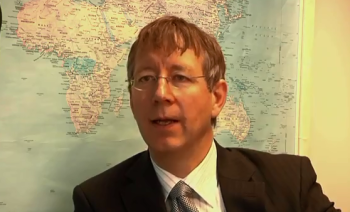Four million Canadians live in a state of food insecurity. Can the country’s new national food policy be the solution?
Canada, one of the wealthiest countries in the world, has a food problem.
According to the non-profit network Food Secure Canada, four million out of 39 million Canadians live in a state of food insecurity, without reliable access to adequate amounts of safe, good-quality, nutritious food.
“You wouldn’t immediately think that, but food security is a huge issue for us,” said Diana Bronson, Food Secure Canada’s executive director. “Four million of our citizens are unable to afford a healthy diet for their families, even if sixty percent of them actually have jobs.”

Four million out of 39 million Canadians live in a state of food insecurity, without reliable access to adequate amounts of safe, good-quality, nutritious food
Food Secure Canada brings together organisations from across the country into a national network to advocate for better food policies at the federal level.
“There are all kinds of innovative community-driven initiatives across Canada, from rethinking the food bank models to more sustainable agricultural practices,” said Bronson. “Unfortunately, when our government talks about innovation, very frequently they only refer to technological innovations, not the social ones, of which there are so many.”
The issue of food insecurity in Canada – as in much of the rest of the world – is tied to poverty, said Bronson. “These are tightly-linked problems.”
A Food Policy for Canada
The country’s Department of Agriculture and Agri-Food has recently begun working on a national food policy, known as A Food Policy for Canada. Bronson believes this could be part of the solution.
“This is a great opportunity,” she said. “After many years of lobbying, we’ve finally convinced the government to develop a national food policy. We’ve just completed the consultation; now it’s the government’s turn. We hope this will move us in the direction of a healthier and more sustainable food system, where all Canadian can afford access to good-quality, nutritious food.”
Watch the extended interview with Diana Bronson here:
The reason behind the push for a national food policy, Bronson said, was the fragmentation of the various departments. “The different government departments are working at cross-purposes. You have a health department and an agriculture department, and they don’t communicate with each other.”
The goal of a national, or common food policy is “to break down some of these silos”, Bronson said. “To have a more coherent and integrated approach with regards to public policy on food.”
The policy is expected to bring together all the different actors within Canada’s food system, including farmers, processors, retailers, consumers, academia, NGOs and the government.
“Many less-developed countries are leading the way on food security; Canada is lagging behind them in many ways”
Canada isn’t the only country pursuing this path. “Actually, many less-developed countries are leading the way,” Bronson said. “For example, in Brazil there are some very interesting policies, like the adoption of zero hunger as a target or the democratisation of food system governance. Other countries have enshrined the right to food in their constitutions. These are all very promising developments, and Canada is lagging behind them in many ways.”
Though a national food policy is important, the local element cannot be taken out of the picture, Bronson added. “Just as each country has its own set of problems, so do the different territories within. The food system is affected by the decisions taken at the municipal, regional, national and international levels, so we very much advocate for local solutions as well.”
This article was written by Bartosz Brzezinski, Editorial Coordinator at Capacity4dev
Image credit: The JH Photography/Flickr via Creative Commons License 2.0





Log in with your EU Login account to post or comment on the platform.